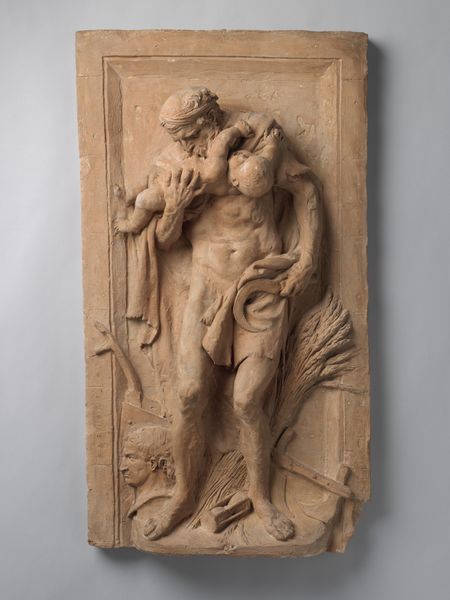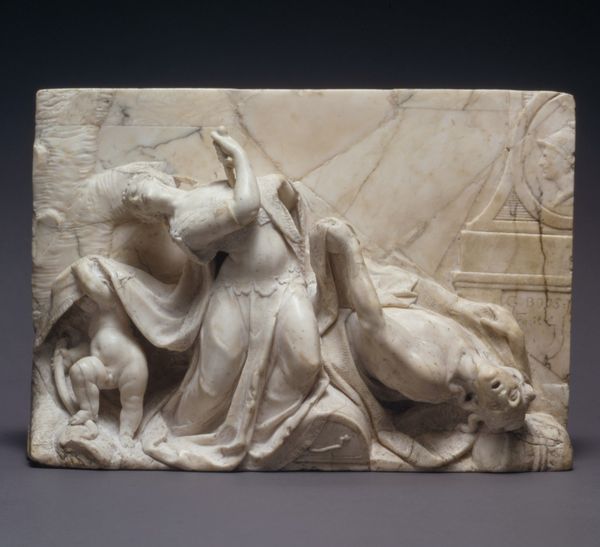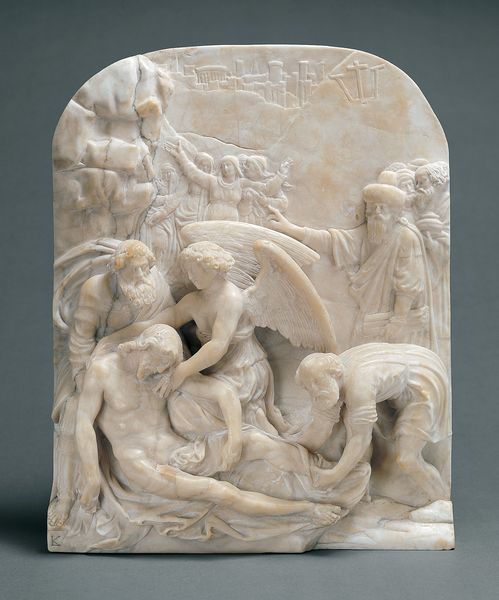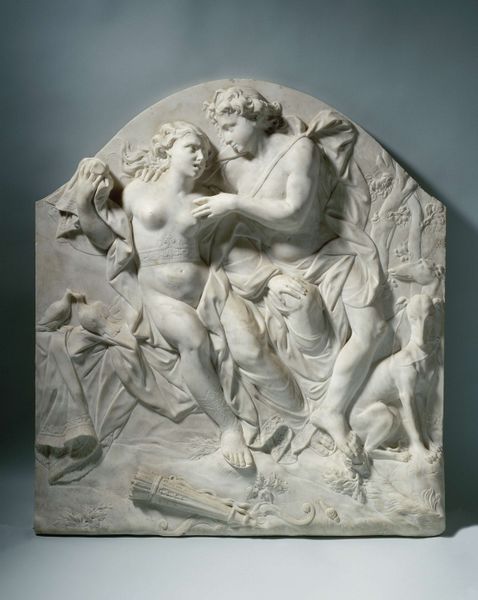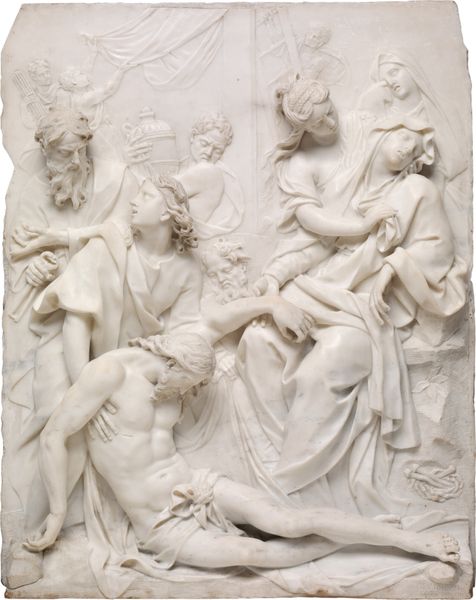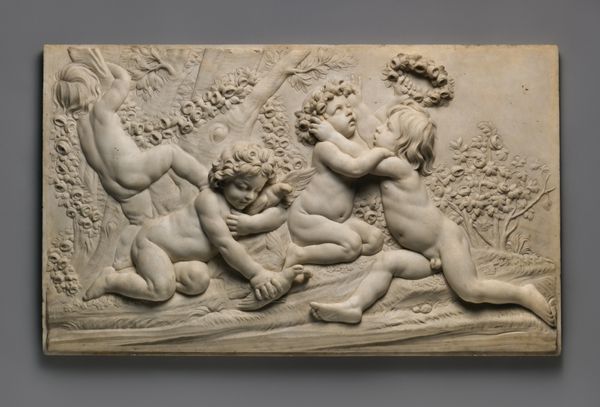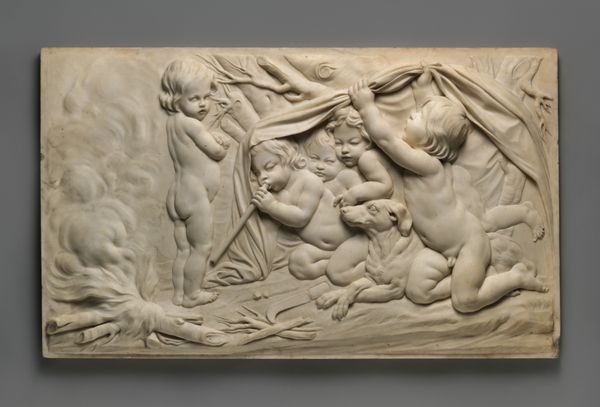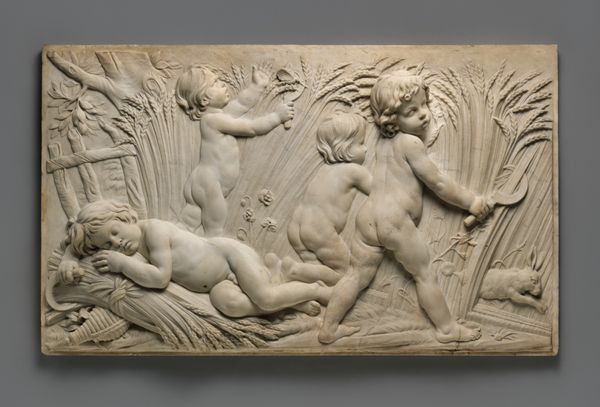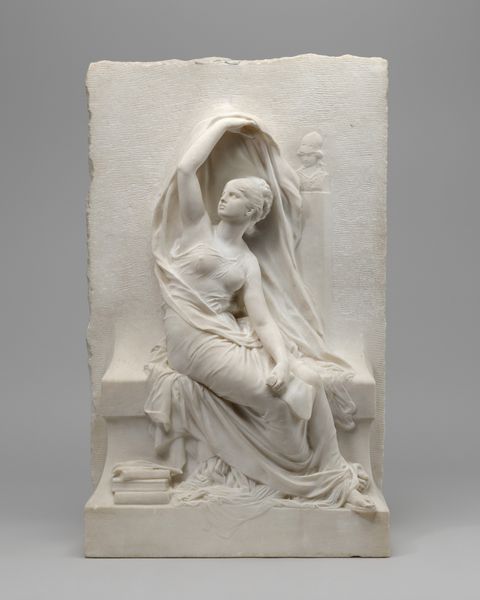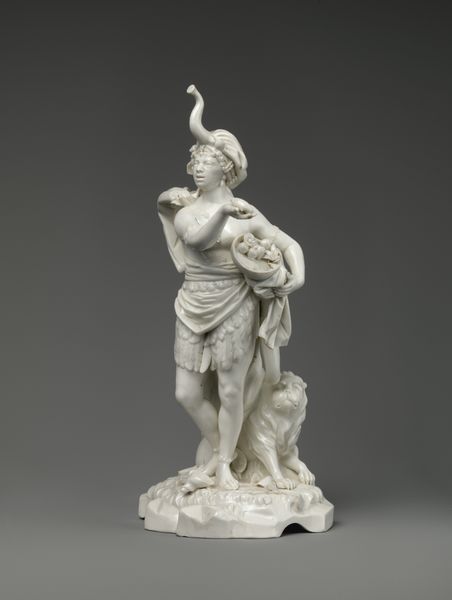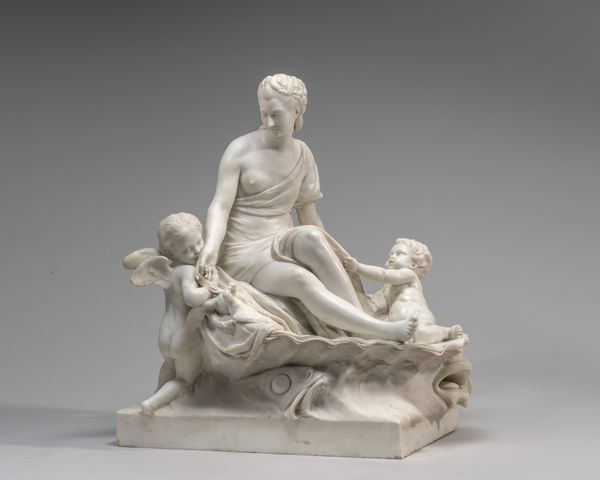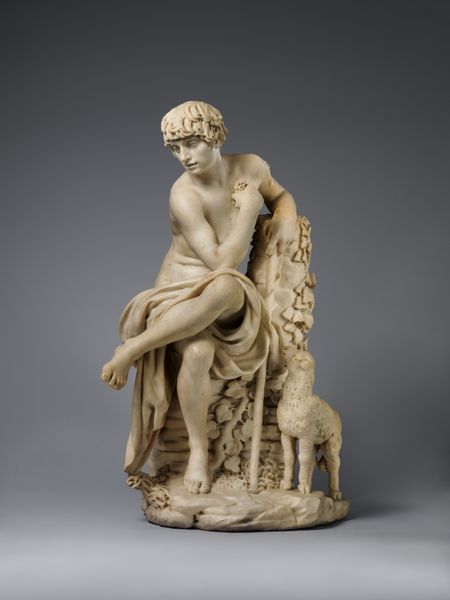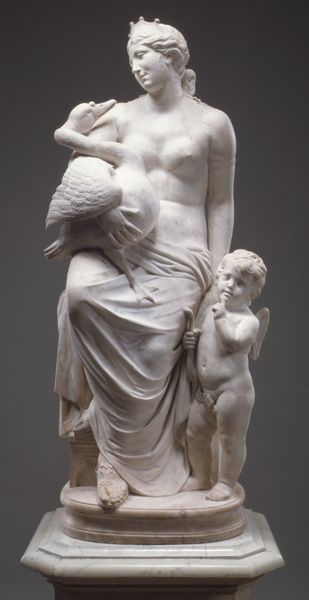
Dimensions: 86 × 80 cm (33 7/8 × 31 1/2 in.)
Copyright: Public Domain
Curator: Immediately striking, isn't it? A sense of profound stillness despite the clear narrative drama. Editor: Indeed. There is a somber peace, like a held breath before a storm. The cold, white marble seems appropriate to this scene of death. Curator: This is Antonio D’Este’s "Deposition," a marble relief sculpture dating from around 1800 to 1805. It's currently housed here at The Art Institute of Chicago. Editor: Visually, it borrows elements from both Neoclassical and Baroque styles. Notice the theatrical, dynamic drapery that creates an emotional pull, versus the almost hyper-realistic rendering of Christ’s body which provides a grounded effect? Curator: Absolutely. The image of the Deposition, or Lamentation, has a long and complex history. Beyond the central figures of Christ and the Virgin Mary, look closely at the details—the angels ascending towards a faint crucifix, their ascension forming beams of light, as well as the inclusion of Nicodemus and other mourners. Editor: What is striking here is the accessibility afforded by the stone’s muted, solid form. Compared to history paintings depicting this popular motif of this period, it presents a softened yet powerful commentary. Were sculptures such as these often commissioned for private chapels at the time? Curator: Precisely! D’Este sculpted extensively for royal patrons during the Napoleonic era. Art during this period often reinforced existing social hierarchies and power structures through classical allegories and overt moral messaging, making sculptures like this highly desirable among noble classes. Editor: Interesting that this incredibly private moment, this physical lowering and mourning, became yet another symbol of power in an era defined by revolution. Curator: And perhaps even a little subversive, depending on one's point of view. Death as a symbol is very potent, one easily manipulated and projected upon. Editor: Absolutely, yes. It really invites the viewer to reflect not only on the Biblical story but the story of its place in the society that commissioned it. Curator: The power of visual memory shaping cultural identity – D’Este seems to be fully aware. Editor: Ultimately, this piece serves as an impressive reflection on art and emotion across shifting epochs of change.
Comments
No comments
Be the first to comment and join the conversation on the ultimate creative platform.
